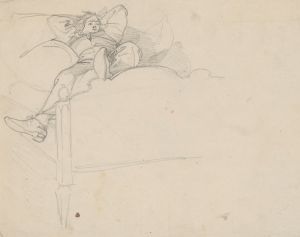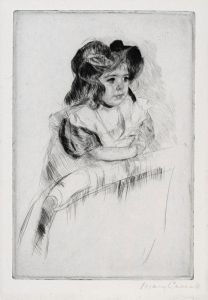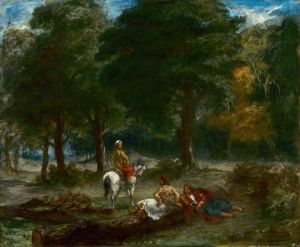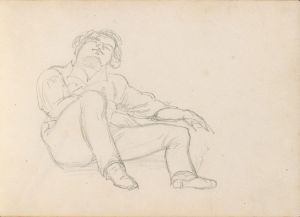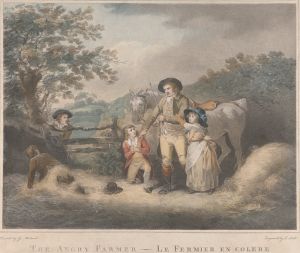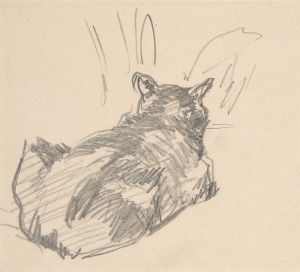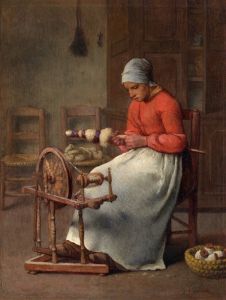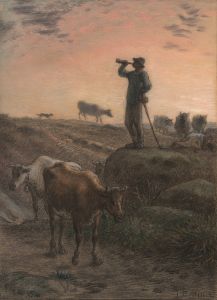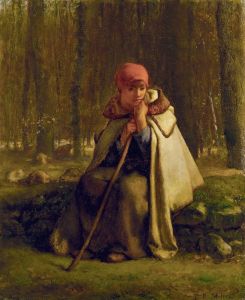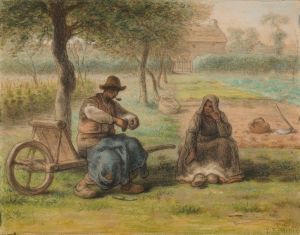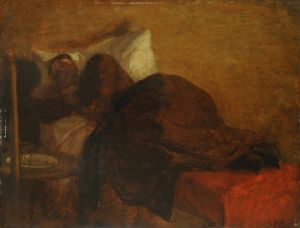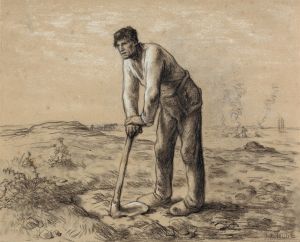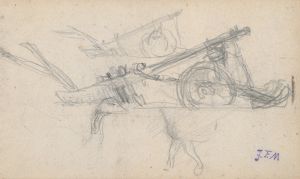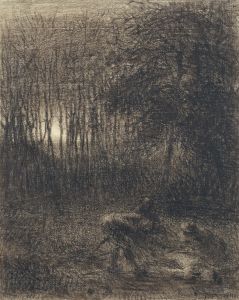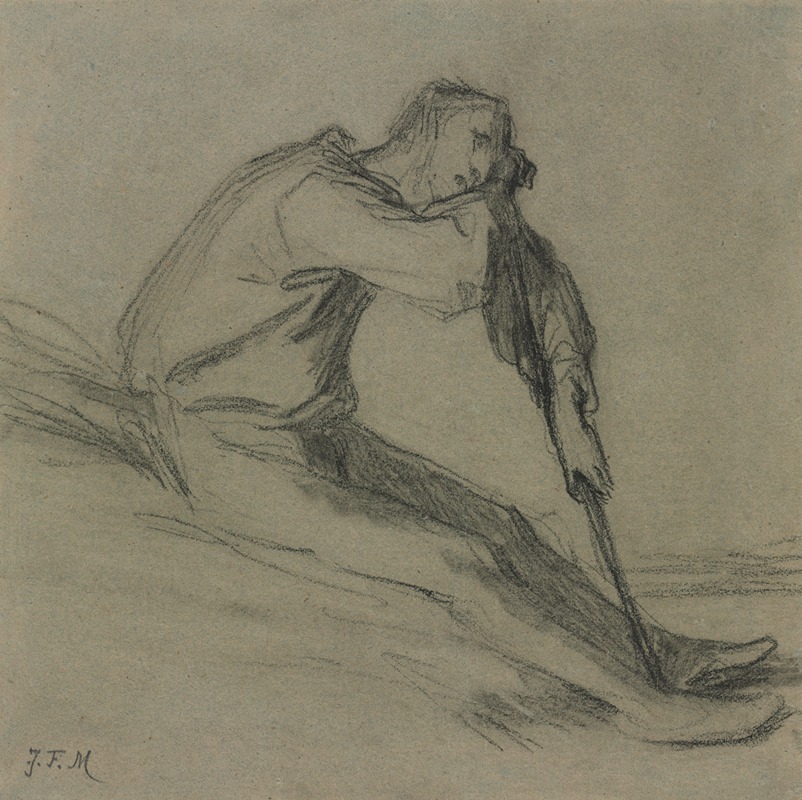
Seated Peasant Resting on a Hoe
A hand-painted replica of Jean-François Millet’s masterpiece Seated Peasant Resting on a Hoe, meticulously crafted by professional artists to capture the true essence of the original. Each piece is created with museum-quality canvas and rare mineral pigments, carefully painted by experienced artists with delicate brushstrokes and rich, layered colors to perfectly recreate the texture of the original artwork. Unlike machine-printed reproductions, this hand-painted version brings the painting to life, infused with the artist’s emotions and skill in every stroke. Whether for personal collection or home decoration, it instantly elevates the artistic atmosphere of any space.
Jean-François Millet's "Seated Peasant Resting on a Hoe" is a notable work by the French artist, who is renowned for his depictions of rural life and peasant figures. Millet was a leading figure in the Barbizon School, a movement that emerged in the mid-19th century, which focused on realism and the portrayal of rural scenes. His works often highlight the dignity and hardship of peasant life, reflecting his deep empathy for the working class.
"Seated Peasant Resting on a Hoe" exemplifies Millet's commitment to realism and his ability to capture the essence of rural labor. The painting portrays a peasant seated on the ground, resting with a hoe, a common agricultural tool, which underscores the theme of labor. The figure is depicted in a moment of respite, suggesting a pause in the toil of daily work. This moment of rest is significant as it humanizes the peasant, offering a glimpse into the life of those who work the land.
Millet's use of color and composition in this work is characteristic of his style. He often employed earthy tones and a muted palette, which not only reflects the natural environment but also conveys a sense of solemnity and respect for his subjects. The composition is typically straightforward, focusing on the figure of the peasant, which allows the viewer to engage directly with the subject without distraction.
The painting is part of Millet's broader oeuvre that includes other famous works such as "The Gleaners" and "The Angelus," both of which similarly explore themes of rural life and labor. Millet's work was influential in the development of later art movements, including Realism and Impressionism, and his focus on everyday subjects paved the way for future artists to explore similar themes.
Millet's background and upbringing in rural France had a profound impact on his artistic vision. Born in 1814 in the village of Gruchy, Millet was the son of a farmer, and his early experiences in the countryside deeply influenced his perspective and choice of subject matter. This personal connection to the land and its people is evident in his empathetic portrayal of peasants.
"Seated Peasant Resting on a Hoe" is not only a reflection of Millet's artistic style but also a commentary on the social conditions of his time. During the 19th century, France was undergoing significant social and economic changes, with industrialization altering traditional ways of life. Millet's work serves as a reminder of the enduring connection between humans and the land, and the timeless nature of agricultural labor.
The painting is housed in a collection that appreciates Millet's contribution to art and his role in highlighting the lives of ordinary people. While specific details about the painting's provenance and exhibition history might not be extensively documented, it remains an important piece within Millet's body of work.
In summary, "Seated Peasant Resting on a Hoe" is a testament to Jean-François Millet's skill as a painter and his dedication to portraying the realities of rural life. Through his art, Millet offers a window into the world of the 19th-century peasant, capturing both the physicality of their labor and the quiet moments of rest that punctuate their days.





